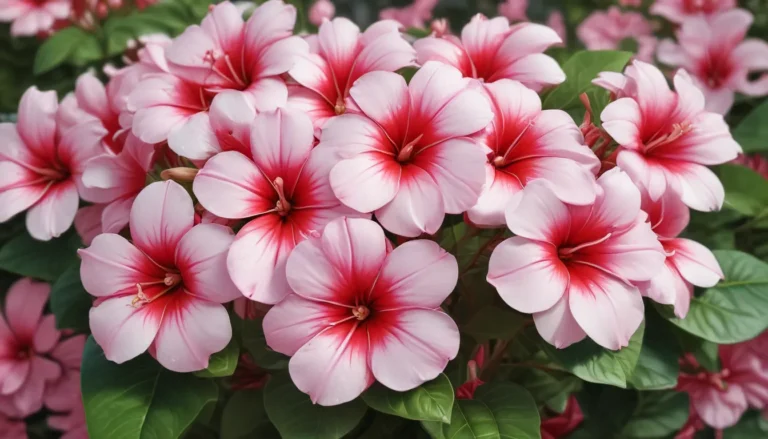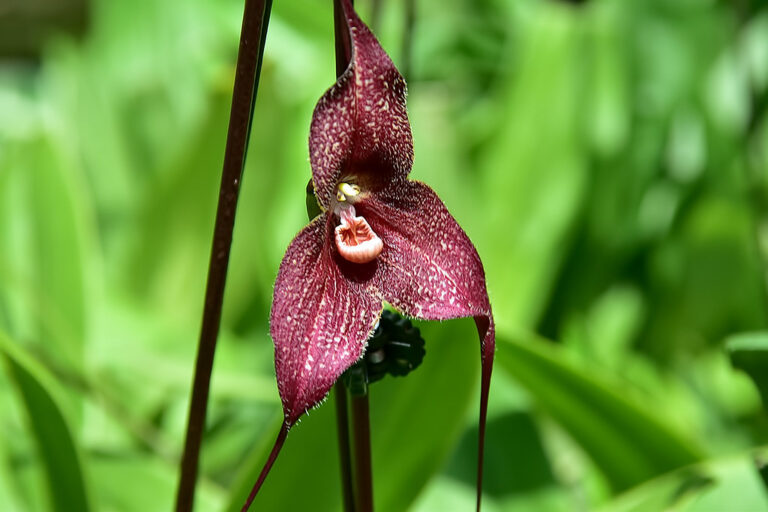The pictures we use in our articles might not show exactly what the words say. We choose these pictures to make you interested in reading more. The pictures work together with the words but don’t take their place. The words still tell you the important facts.
Monkshood, also known as Aconitum, is a captivating plant that has intrigued plant lovers and experts worldwide. This perennial flowering plant, belonging to the buttercup family, Ranunculaceae, has a unique appearance and a rich history that makes it a popular choice for gardens, herbal medicine, and folklore. In this article, we will explore the fascinating world of monkshood and uncover 19 intriguing facts about this enchanting plant. From its vibrant blooms to its toxic nature, there is a lot to discover about monkshood that will leave you amazed and inspired. So, let's embark on this exciting journey and unravel the wonders of monkshood!
Understanding Monkshood: A Plant of Contradictions
- Monkshood is Highly Toxic: Monkshood, scientifically known as Aconitum, is considered one of the most poisonous plants globally, containing toxic alkaloids that can be deadly if ingested. Its name "monkshood" originates from the unique shape of its flowers, resembling a monk's hood or helmet.
- Medicinal Uses: Despite its toxicity, certain species of monkshood have been used medicinally for centuries. When used in precise and controlled amounts, extracts of monkshood plants have been known to alleviate pain, reduce inflammation, and even treat heart conditions.
Unveiling the Mysteries of Monkshood
- Native Habitat: Monkshood is originally native to Europe and parts of Asia, including the Himalayas. Thriving in moist, mountainous areas, this plant can often be found in alpine meadows or woodland habitats.
- Colorful Blooms: The flowers of monkshood come in a variety of colors, including shades of blue, purple, white, and yellow. Their unique shape, resembling a helmet or hood, adds to their allure and vibrancy.
Exploring Monkshood’s Fascinating History
- Historical Uses: In ancient times, monkshood was used to poison the tips of arrows, creating a deadly weapon for hunting or warfare. Even in its toxic nature, the plant found dark applications.
- Symbolic Meaning: Throughout history, monkshood has held symbolic meanings in various cultures, including protection against evil spirits, warding off witchcraft, and symbolizing bravery and courage.
Diving Deeper into Monkshood’s Diversity
- Species Varieties: With approximately 250 known species, monkshood comes in various forms, each with its unique characteristics. Examples include Akonite, Blue Monkshood, and Chinese Monkshood.
- Rich Medicinal History: Monkshood has played a significant role in traditional medicine, being used to treat ailments like joint pain, rheumatism, and anxiety. However, caution is advised when using this plant due to its toxic nature.
Embracing Monkshood in Different Contexts
- Gardening and Landscaping: Despite its toxicity, some gardeners and landscapers appreciate the unique beauty of monkshood and choose to incorporate it into their outdoor spaces. Care must be taken to prevent accidental ingestion or contact.
- Distinctive Features: If you ever encounter monkshood, you may notice its unique scent described as a mix of camphor and herbs, adding to the mystique of the plant.
Appreciating Monkshood’s Botanical Family and Blooming Season
- Botanical Family: Belonging to the Ranunculaceae family, monkshood shares characteristics with other well-known plants like buttercups, delphiniums, and clematis, including showy flowers and diverse growth forms.
- Long Blooming Season: Under optimal conditions, monkshood can have a long blooming season, with flowers appearing in late spring or early summer and continuing into the fall months.
Embracing Monkshood’s Role in Traditional Practices
- Traditional Dyes: In the past, monkshood was utilized to create natural dyes, with the plant's deep blue and purple flowers serving as sources for pigments used in dyeing fabrics and textiles.
- Toxicity Origins: The poisonous properties of monkshood stem from alkaloids, particularly aconitine, that affect the nervous system and can cause symptoms like numbness, tingling, and respiratory distress.
Navigating Monkshood’s Care and Lore
- Caution Required: Due to its toxicity, monkshood demands careful handling. Gloves should be worn when working with the plant, and thorough handwashing is essential post-contact to prevent accidental poisoning.
- Mythological Significance: Monkshood has been intertwined with various mythologies and folklores, associated with transformation, protection against evil, and as a vital component in magic potions and spells.
Continuing the Journey with Monkshood
- Global Adaptability: Monkshood can be found in temperate regions worldwide, thriving in mountainous areas, woodland habitats, or near bodies of water. Its adaptability allows it to flourish in diverse climates and soil conditions.
- Ornamental Value: Despite its toxicity, monkshood is often cultivated for its ornamental qualities, with tall spikes of flowers adding a dramatic touch to gardens. Handling this plant with care is crucial.
In conclusion, the captivating allure of monkshood goes beyond its 19 fascinating facts, holding a wealth of knowledge for those curious to delve deeper into its enchanting world. Whether it's exploring its potent alkaloids or unraveling its role in mythology, monkshood remains a remarkable plant that continues to capture the imagination of botanists and garden enthusiasts alike.
Embarking on a Fascinating Journey with Monkshood
Monkshood, with its rich history and intriguing qualities, offers a world of discovery for plant enthusiasts. From its striking blue flowers to its potent medicinal properties, monkshood is a plant that leaves a lasting impression. Whether admired for its ornamental value or respected for its toxic nature, monkshood stands as a unique and captivating addition to any garden or herbal medicine collection.
FAQs
Q: Are monkshood flowers truly blue?
A: Yes, monkshood flowers primarily exhibit shades of blue, though varieties showcasing purple, white, or yellow hues can also be found.
Q: Can monkshood be grown indoors?
A: While primarily an outdoor plant, monkshood can be cultivated indoors in containers with sufficient sunlight and care.
Q: Is monkshood poisonous?
A: Yes, monkshood is highly poisonous, containing toxic alkaloids that can be harmful if ingested or in contact with the skin.
Q: How long does it take for monkshood to bloom?
A: Monkshood typically blooms in mid to late summer, taking about 2-3 years to establish from seeds or divided plants before flowering.
Q: Can monkshood be used medicinally?
A: Yes, monkshood has a long history of traditional medicinal use, with extracts being utilized in remedies for pain, inflammation, and fever. Consultation with a qualified herbalist or healthcare professional is recommended.
Embark on a journey of discovery with monkshood, and unveil the mesmerizing details and mindblowing facts that make this plant a true wonder of nature. Explore its rich history, unique characteristics, and diverse uses, and let monkshood inspire you with its enchanting presence in the botanical world.






